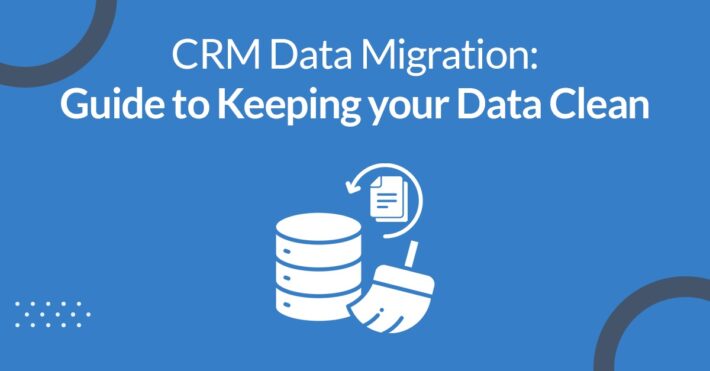How to assess if your e-Commerce business needs iPaaS
e-Commerce is something in vogue. You cannot imagine your life from shopping a paperclip to Mac Book Pro, without hitting that “buy now” button. And if you’re an owner you just keep your finger-crossed to see an over-filled cart every morning.
Whether you are a Startup or a seasoned one, you must be aware of the challenges to run a successful e-Commerce business.
A typical e-Commerce business usually includes handling these major activities right from vendor management, inventory management to customer management. There are more or less 10 main features to consider while maintaining an online retail business which generates revenue. Here are the features:
Key business features to manage in an e-Commerce business
-
- Vendor Management
-
- Order Management and Delivery
-
- Warehousing
-
- Customer Support or Customer Relationship Management
-
- Inventory Management
-
- Website Management
-
- Legal Compliance
-
- Employee Management
-
- Accounts Management
- Marketing and Sales Management
To manage all these features, you must be using the best-in-class software available for each feature. This means handling multiple APIs, data management, reporting, maintenance and a lot of technical stuff which will make you paralyzed. Moreover, all these software are not really talking to each other — that is they are not fully integrated.
Here you may feel trapped.
Well, there’s a way out. What you need is an efficient and seamless integration platform — the tech world calls it Integration-Platform-as-a-service (iPaaS).
It’s the latest kid on the block of Cloud integration platform and growing popularity every day.
Let’s take a look what Gartner stated —
“The iPaaS segment is still a small part of the overall market, topping $1 billion in revenue for the first time in 2017 after growing over 60 percent in 2016 and 72 percent in 2017. This makes iPaaS one of the fastest-growing software segments.”
It will make all of your software solutions to be friends with each other and work together to create a harmony between all the business features I mentioned above.
And in the process this will make your business processes and workflow smoother.
You will thus be able to concentrate more on your core aspects of business saving your time and strengthen your skill set in which you’re passionate.
By now, you are very curious to know more about iPaaS.
Probably want to know how to assess the right vendor along as well. Whether there will be security issues to integrate.
Here is a smart checklist to ease your mind.
1 . Assess Your Needs
Before you move to iPaaS integration, think hard and spend a great deal of time to understand your organization needs. In case, if you have really the urgency to have one as soon as possible, then you need to identify;
-
- What are the challenges?
-
- How this integration will solve those?
-
- How much time it will take to complete the integration?
- How much budget you will consider initially?
iPaaS is a highly customizable platform to suit different business needs.
2. Technical Expertise
Before you go on scouting around for vendor, make sure that your technical team has the expertise to understand and help you through the entire cycle of integration.
Also, your tech team will need to maintain and support the system once it is up and running.
They should be involved right from the start. After all, your tech team knows best about the installations and issues in your company.
3. Scalability
After you finish your assessment, you have a complete understanding of how you want to move forward.
You are about to start your vendor hunt. Take a pause and once again think about the scalability of the integration and how this will shape your business in the long run.
When you have a blueprint of your assessment, it will be easier for you to match the expectation with the platform features and finally take an informed decision. In fact, as IDC forecasted, the Retail industry will be spending at 22.8% CAGR for the next five year on Cloud services.
4. Vendor Research
Now comes the next step, where you start searching for your integration partner aka vendor who comes to your rescue and all the problems go away.
Well, the integration takes time and worth the waiting.
But if you choose the wrong vendor who does not understand your pain points and the type of business solution you require, it can ruin all the efforts. You can ask for the following points for starters.
-
- Projects they handled in your industry — use cases which can be compared to assess your challenges.
-
- Team size they have for such integration
-
- Time frame to complete the integration
-
- Their project management process
-
- How they will communicate with you
-
- After delivery support system
- Payment options/ cycle
5. Budget Planning
Initially, you started your iPaaS integration journey with a budget on your mind. You are now at the consideration stage of your purchase cycle after you get some idea from the vendor search.
It’s time now to dive deeper into the information collected from the research and come out with a definite budget plan to accommodate the technical overhaul.
Your budget plan should consider all the stages and payment plan that will suit you most in the days ahead.
That’s it. You have reached the destination of your iPaaS research journey for your e-Commerce business. You have selected the vendor, your strategy to integrate everything is in place. You have moved your choice to the cart. Now is the time to click that “Buy Now” button. Or if you want to procrastinate a little bit, it’s up to you. Your competitors might not though.
Good luck with your integration!

